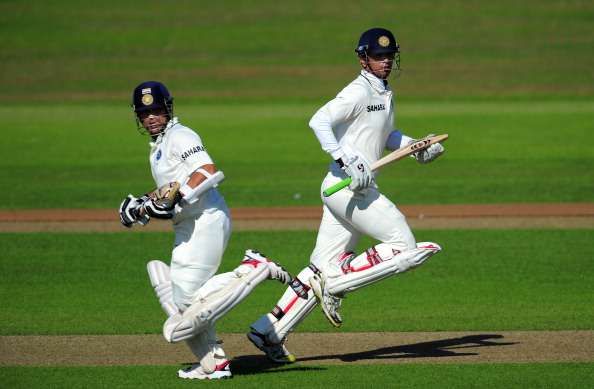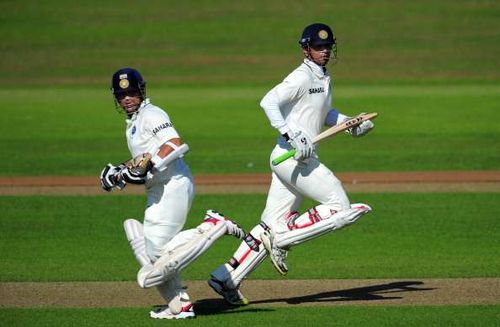
Top 11 Batsmen against pace bowling in the last four decades

Pace bowlers are probably the Thors of the cricketing world – loved and feared, brutal, aggressive, and dominating. They bring the zing into cricket, coaxing life equally out of all surfaces, spicy and placid. But, what is cricket if there isn’t any contest and hence we are thankful to those gritty batsmen, soaked in gumption and drenched in tenacity, who handle pace bowlers, sometimes like men possessed.
This piece is a tribute to such batsmen – batsmen who have tamed bowlers in their own den and batsmen who have survived devastating spells. Picking the top 11 batsmen against pace bowlers is always a tough ask for the following reasons:
#1 Across eras, the quality of fast bowling has varied. The mantel for being the scariest fast-bowling den has changed hands quite a bit. West Indies owned it for nearly two decades in the 70s and 80s. Australia had a good spell during the 80s and then again in the first decade of the 21st century.
Pakistan was scary between ‘85 and ‘95 as the Sultans of Swing terrorised the batsmen home and away. South Africa’s battery of fast bowlers has always been on full charge especially at home. So picking batsmen from across eras from different countries is a really tough ask.
#2 Over the years, cricket has evolved whether in the size of bats and protective gear or the nature of pitches and repertoire of fast bowlers.
#3 Some of the best batsmen of all time looked so invincible partially because they never had to face a generation of great fast bowlers from their own team – Ricky Ponting and Jacques Kallis come to mind immediately.
#4 Stats could be elusive considering there are always anomalies. Boiling it down to how many a batsmen scored precisely against the great fast bowlers is hard data to find, almost like sifting through a haystack for a needle. Different batsmen scored in different countries against different batteries of pace bowlers leaving very little commonality for us to compare.
#5 We have excluded from the list, batsmen from the era of uncovered pitches. The advent of safety gear, especially helmets, in itself, has changed to a certain extent the batsmen’s ability to tackle fast bowlers. It is hard to compare the Laras and Tendulkars against greats like Don Bradman, Walley Hammond, Len Hutton, Herbert Sutcliffe and Sir Jack Hobbs.
But we try to do what we try to do – extrapolate, pick a few stats that talk about the batsman’s ability and compare it to others with similar history and equally good numbers. Here are some criteria that I have used to pick the batsmen on the list, although, there is a lacuna that the reader as always is more than welcome to fill. Some of the factors we considered are:
- Averages against West Indies during their heyday between 1970 and 1995 in their own den.
- Averages in matches that involved Michael Holding, Malcolm Marshall and Andy Roberts together – not a big set but there is some data we could use from there.
- Averages against Australia during the first decade of the 21st century, with most matches including the duos of McGrath-Gillespie or McGrath-Lee.
- Averages against Australia in their own den at any point of time.
- Averages against the Sultans of Swing – Wasim Akram and Waqar Younis – playing together.
- Averages against South Africa in the Saffers’ own den from the time they were reinstated back into the cricketing fold, given the nation’s ability to produce great fast bowlers constantly.
- Averages in matches that had Dennis Lillee and Jeff Thomson (probably the world’s fastest bowler) playing together.
The drawbacks of such calculations include these considerations:
Although batsmen have high averages against teams that possess great fast bowlers, there is no guarantee those runs were actually scored against the great fast bowlers. A great example is Sachin Tendulkar’s outstanding knock of 146 in Cape Town, in one of the most mesmerising duels of all time, against Dale Steyn.
Sachin scored only 23 runs off Steyn having faced as many as 83 balls. But to his credit, he survived and therefore, shielded other batsmen from that phenomenal spell. Even if we take a look at batsmen and their individual averages against particular bowlers, those runs will include runs scored at home and away across various conditions, under varying pressure.
There is almost always support for batsmen and it is hard to be objective about batsmen and their performances against fast bowlers.
At the end of the day, it is not all about runs though and if a batsman has survived a tough attack, runs or no runs, he deserves some credit. This blog, in particular, is an excellent study in itself where batsmen have been compared based on their averages against high-quality bowling attacks, divided on a median to find some common ground between batsmen across eras and across various nationalities.
This is a Herculean task though and cricket at the end of the day, is as much a sport of impressions and the artistry as it is about cold stats staring at you.